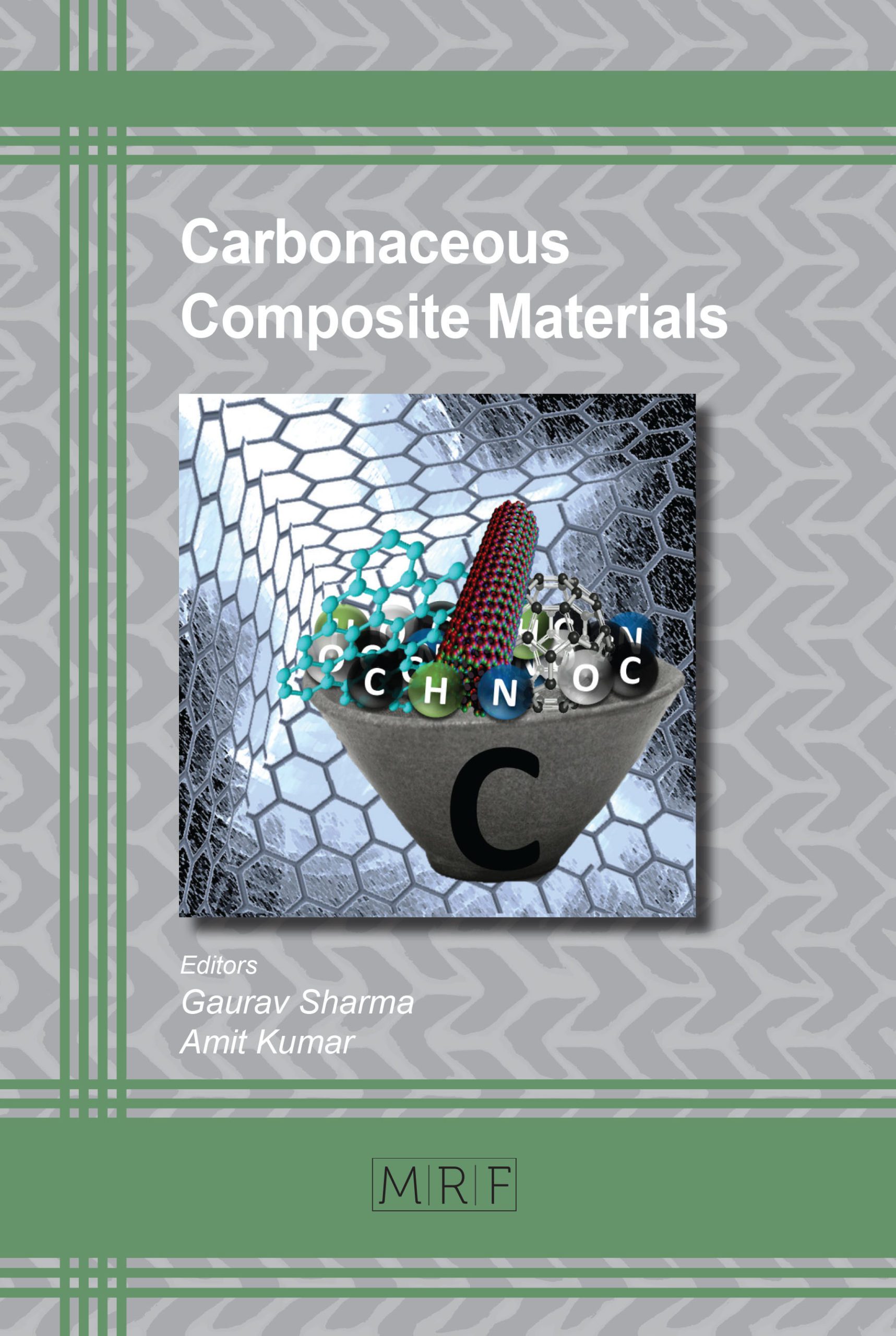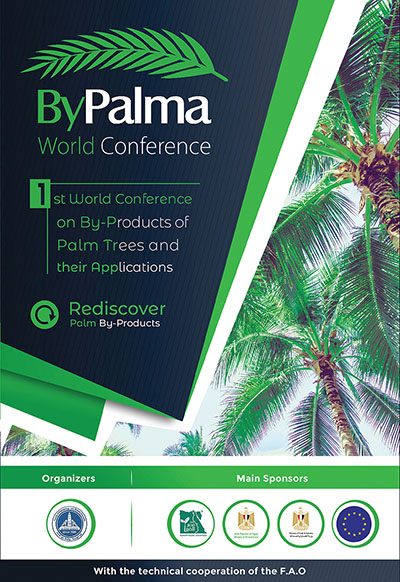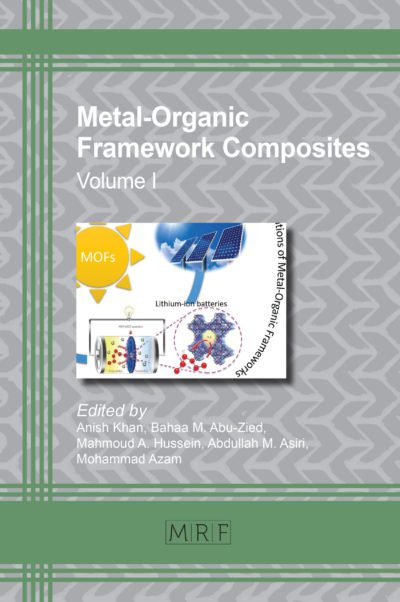Biochar and its Composites
P. Senthil Kumar, P.R. Yaashikaa, Mu. Naushad
Biochar is actually a carbon-rich stable solid charcoal primarily used for soil modifications. Biochar can be produced using different methods like pyrolysis, gasification, etc. Biochar exists in many forms including biochar glomalin, terra preta, biochar hydrogel having potential to increase soil fertility at low pH, providing protection against infectious diseases and increasing the agricultural productivity. Biochar is an eco-friendly approach for replacing activated carbon and other carbon based materials. Physicochemical properties of biochar can be increased by chemical and physical activation methods. Biochar finds application as adsorbing materials in water and air pollution, production of biodiesel and soil conditioning.
Keywords
Biochar, Production, Characterization, Composites, Environmental Impacts, Applications
Published online 11/20/2018, 26 pages
DOI: http://dx.doi.org/10.21741/9781945291975-11
Part of the book on Carbonaceous Composite Materials
References
[1] J. Lee, K.H. Kim, E.E. Kwon. Biochar as a catalyst. Renewable and Sustainable Energy Reviews. 77 (2017) 70-79. https://doi.org/10.1016/j.rser.2017.04.002
[2] P.P. Otte, J. Vik. Biochar Systems: Developing a socio-technical system framework for biochar production in Norway. Technology in Society. 51 (2017) 34-45. https://doi.org/10.1016/j.techsoc.2017.07.004
[3] Rawal, S.D. Joseph, J.M. Hook, et al. Mineral-Biochar Composites: Structure and Porosity. Environmental Science and Technology. 50 (14) (2016) 7706-7714. https://doi.org/10.1021/acs.est.6b00685
[4] S.V. Vassilev, D. Baxter, L.K. Anderson, C.G. Vassileva. An overview of chemical composition of biomass. Fuel. 89 (2010) 913-933. https://doi.org/10.1016/j.fuel.2009.10.022
[5] J.S. Cha, S.H. Park, S.C. Jung, C. Ryu, J.K. Jeon, M.C. Shin, Y.K. Park. Production and Utilization of Biochar: A Review. Journal of Industrial and Engineering Chemistry. 40 (2016) 1-15. https://doi.org/10.1016/j.jiec.2016.06.002
[6] P. Godlewska, H.P. Schmidt, Y.S. Ok, P. Oleszczuk. Biochar for composting improvement and contaminants reductions: A review. Bioresource Technology. (2017) https://doi.org/10.1016/j.biortech.2017.07.095. https://doi.org/10.1016/j.biortech.2017.07.095
[7] K.L. Yu, B.F. Lau, P.L. Show, H.C. Ong, T.C. Ling, W.H. Chen, N.E. Poh, J.S. Chang. Recent developments on algal biochar production and characterization. BioresourceTechnology.(2017). https://doi.org/10.1016/j.biortech.2017.08.009. https://doi.org/10.1016/j.biortech.2017.08.009
[8] Y.S. Ok, S.M. Uchimiya, S.X. Chang, N. Bolan. Biochar Production, Characterization and Applications. New York: CRC Press, Taylor and Francis Group.
[9] L.V. Zwieten, S. Kimber, S. Morris, K. Chan, A. Downie, J. Rust, S. Joseph, A. Cowie. Effects of biochar from slow pyrolysis of papermill waste on agronomic performance and soil fertility. Plant and Soil. 327 (2010) 235-246. https://doi.org/10.1007/s11104-009-0050-x
[10] D. Ozcimen, A.E. Mericboyu. Characterization of biochar and bio-oil samples obtained from carbonization of various biomass materials. Renewable Energy. 35 (6) (2010) 1319-1324. https://doi.org/10.1016/j.renene.2009.11.042
[11] T. Xie, K.R. Reddy, C. Wang, E. Yargicoglu, K. Spokas. Characteristics and Applications of Biochar for Environmental Remediation: A Review. Critical Reviews in Environmental Science and Technology. (2014). http://dx.doi.org/10.1080/10643389.2014.924180. https://doi.org/10.1080/10643389.2014.924180
[12] V.S. Sikarwar, M. Zhao, P. Clough, J. Yao, X. Zhong, M.Z. Memon, N. Shah, E.J. Anthony, P.S. Fennell. An overview of advances in biomass gasification. Energy and Environmental Sciences. 9 (2016) 2939-2977. https://doi.org/10.1039/C6EE00935B
[13] R.K. Xu, S.C. Xiao, J.H. Yuan, A.Z. Zhao. Adsorption of methyl violet from aqueous solutions by the biochars derived from crop residues. Bioresource Technology. 102 (2011) 10293–10298. https://doi.org/10.1016/j.biortech.2011.08.089
[14] E.N. Yargicoglu, B.Y. Sadasivam, K.R. Reddy, K. Spokas. Physical and Chemical Characterization of waste wood derived biochars. Waste Management. 36 (2015) 256-268. https://doi.org/10.1016/j.wasman.2014.10.029
[15] Z. Liu, F.S. Zhang. Removal of lead from water using biochars prepared from hydrothermal liquefaction of biomass. Journal of Hazardous Materials. 167 (2009) 933–939. https://doi.org/10.1016/j.jhazmat.2009.01.085
[16] K. Jindo, H. Mizumoto, Y. Sawada, M.A.S. Monedero, T. Sonoki. Physical and Chemical Characterization of Biochar derived from different agricultural residues. Biogeosciences. 11 (2014) 6613-6621. https://doi.org/10.5194/bg-11-6613-2014
[17] O. Kostov and J.M. Lynch. Composted sawdust as a carrier for Bradyrhizobium, Rhizobium and Azospirillum in crop production. World Journal of Microbiology and Biotechnology. 14 (1998) 389 – 397. https://doi.org/10.1023/A:1008869329169
[18] B. Glaser and J.J. Birk. State of the scientific knowledge on properties and genesis of Anthropogenic Dark Earths in Central Amazonia (terra preta de Índio). Geochimica et Cosmochimica Acta. 82 (2011) 39-51. https://doi.org/10.1016/j.gca.2010.11.029
[19] L.O. Ekebafe, D.E. Ogbeifun and F.E. Okieimen. Effect of native cassava starch-poly (sodium acrylateco-acrylamide) hydrogel on the growth performance of maize (Zea may) seedlings. American Journal of Polymer Science. 1 (2011) 1 – 6.
[20] C.J. Barrow. Biochar: potential for countering land degradation and for improving agriculture. Applied Geography. 34 (2012) 21 – 28. https://doi.org/10.1016/j.apgeog.2011.09.008
[21] M.O. Ekebafe, L.O. Ekebafe, S.O. Ugbesia. Biochar composts and composites. Science Progress. 98 (2) (2015) 169-176. https://doi.org/10.3184/003685015X14301544319061
[22] T. Ishii and K. Kadoya. Effects of charcoal as a soil conditioner on citrus growth and vesicular-arbuscular mycorrhizal development. Journal of the Japanese Society for Horticultural Science. 63 (1994) 529-535. https://doi.org/10.2503/jjshs.63.529
[23] G. Xu, Y. Lv, H. Shao, L. Wei. Recent advances in biochar applications in agricultural soils: Benefits and environmental implications. Clean – Soil, Air, Water. 40 (2012) 1093-1098. https://doi.org/10.1002/clen.201100738
[24] A.V. McBeath, R.J. Smernik, E.S. Krull, J. Lehmann. The influence of feedstock and production temperature on biochar carbon chemistry: A solid-state 13C NMR study. Biomass Bionenergy. 60 (2013) 121–129. https://doi.org/10.1016/j.biombioe.2013.11.002
[25] A.Pimchaui, A. Dutta, P. Basu. Torrefaction of agriculture residue to enhance combustible properties. Energy and Fuels. 24 (2010) 4638-4645. https://doi.org/10.1021/ef901168f
[26] J. Lehmann, M.C. Rillig, J. Thies, C.A. Masiello, W.C. Hockaday, D. Crowley. Biochar effects on soil biota – A review. Soil Biology and Biochemistry. 43 (2011) 1812–1836. https://doi.org/10.1016/j.soilbio.2011.04.022
[27] M. Ahmad, A.U. Rajapaksha, J.E. Lim, M. Zhang, N. Bolan, D. Mohan, M. Vithanage, S.S. Lee, Y.S. Ok. Biochar as a sorbent for contaminant management in soils and water: A review. Chemosphere. 99 (2014) 19-33. https://doi.org/10.1016/j.chemosphere.2013.10.071
[28] A. Kumar, A. Kumar, G. Sharma, A.a.H. Al-Muhtaseb, M. Naushad, A.A. Ghfar, C. Guo, F.J. Stadler, Biochar-templated g-C3N4/Bi2O2CO3/CoFe2O4 nano-assembly for visible and solar assisted photo-degradation of paraquat, nitrophenol reduction and CO2 conversion, Chemical Engineering Journal, 339 (2018) 393-410. https://doi.org/10.1016/j.cej.2018.01.105
[29] A. Kumar, Shalini, G. Sharma, M. Naushad, A. Kumar, S. Kalia, C. Guo, G.T. Mola, Facile hetero-assembly of superparamagnetic Fe3O4/BiVO4 stacked on biochar for solar photo-degradation of methyl paraben and pesticide removal from soil, Journal of Photochemistry and Photobiology A: Chemistry, 337 (2017) 118-131. https://doi.org/10.1016/j.jphotochem.2017.01.010
[30] A. Kumar, A. Kumar, G. Sharma, M. Naushad, F.J. Stadler, A.A. Ghfar, P. Dhiman, R.V. Saini, Sustainable nano-hybrids of magnetic biochar supported g-C3N4/FeVO4 for solar powered degradation of noxious pollutants- Synergism of adsorption, photocatalysis & photo-ozonation, Journal of Cleaner Production, 165 (2017) 431-451. https://doi.org/10.1016/j.jclepro.2017.07.117
[31] H. Lyu, Y. Gong, R. Gurav, J. Tang. Chapter 9 – Potential Application of Biochar for Bioremediation of Contaminated Soils. Biochar Application (Essential Soil Microbial Ecology). (2016) 221-246.
[32] H. Li, X. Dong, E.B. Silva, L.M. Oliviera, Y. Chen, L.Q. Ma. Mechanism of metal sorption by biochars: Biochar characteristics and modifications. Chemosphere. 178 (2017) 466-478. https://doi.org/10.1016/j.chemosphere.2017.03.072
[33] Z. Tan, C.S.K. Lin, X. Ji, T.J. Rainey. Returning Biochar to Fields: A review. Applied Social Ecology. 116 (2017) 1-11. https://doi.org/10.1016/j.apsoil.2017.03.017
[34] L.D. Burrell, F. Zehetner, N. Rampazzo, B. Wimmer, G. Soja. Long-term effects of biochar on soil physical properties. Geoderma. 282 (2016) 96-102. https://doi.org/10.1016/j.geoderma.2016.07.019
[35] K. Homagain, C. Shahi, N. Luckai, M. Sharma. Biochar-based bioenergy and its environmental impact in Northwestern Ontario Canada: A Review. Journal of Forestry Research. 25 (4) (2014) 737-748. https://doi.org/10.1007/s11676-014-0522-6
[36] J. Lehmann, J. Gaunt, M. Rondon. Biochar sequestration in terrestrial ecosystems: a review. Mitigation and Adaption Stratergies for Global Change. 11 (2006) 403–427. https://doi.org/10.1007/s11027-005-9006-5
































